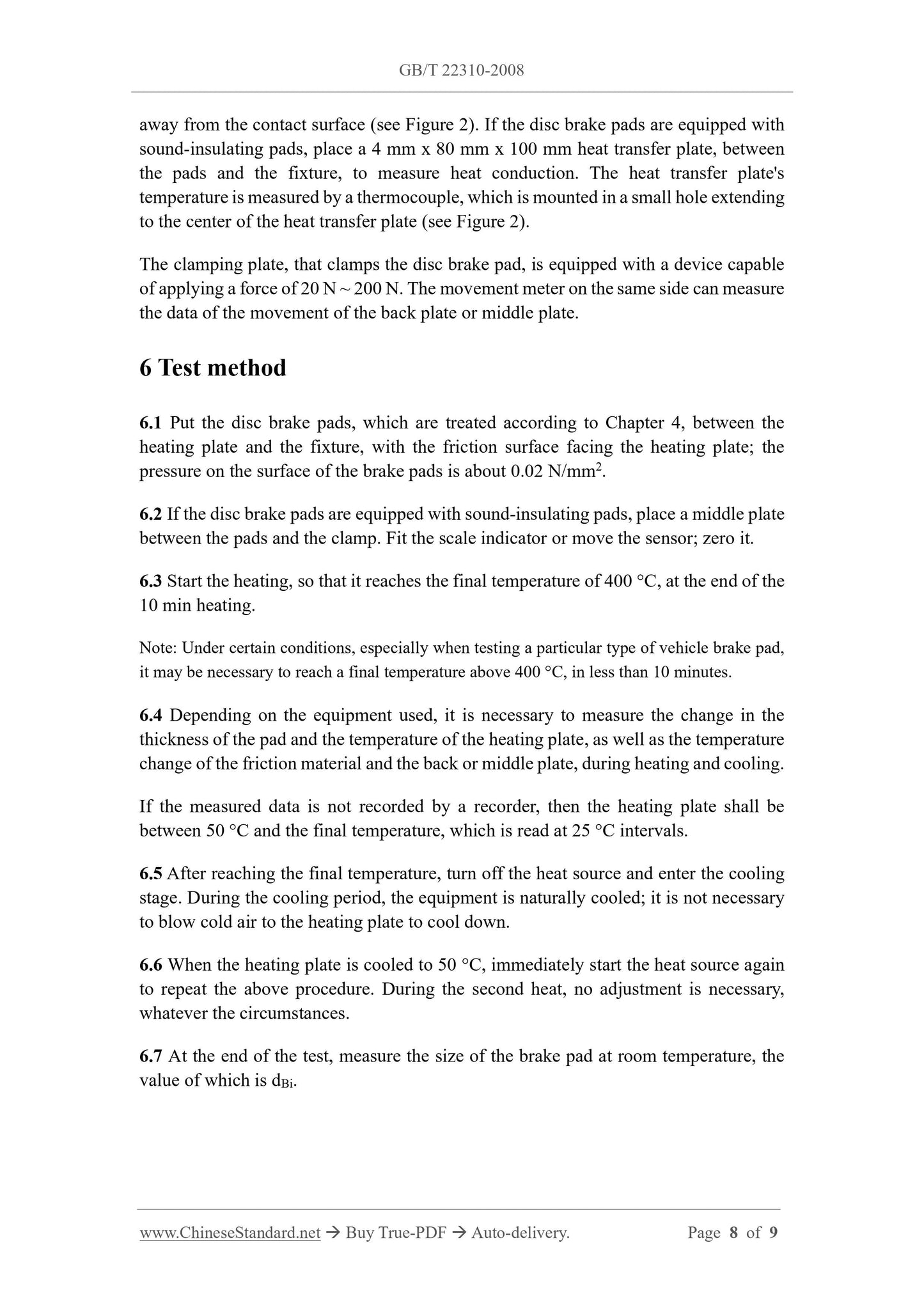1
/
of
4
PayPal, credit cards. Download editable-PDF & invoice In 1 second!
GB/T 22310-2008 English PDF (GB/T22310-2008)
GB/T 22310-2008 English PDF (GB/T22310-2008)
Regular price
$105.00
Regular price
Sale price
$105.00
Unit price
/
per
Shipping calculated at checkout.
Couldn't load pickup availability
GB/T 22310-2008: Road vehicles -- Brake linings -- Effects of heat on dimensions and form of disc brake pads-test procedure
Delivery: 9 seconds. Download (and Email) true-PDF + Invoice.Get Quotation: Click GB/T 22310-2008 (Self-service in 1-minute)
Newer / historical versions: GB/T 22310-2008
Preview True-PDF
Scope
This standard specifies a comprehensive method, for measuring disc brake pads, todetermine dimensional change as a function of temperature and their heat transfer.
Dimensions include:
- Thickness;
- Certain profile dimensions of brake pads, whose variations may lead to brake
failure.
This standard applies to disc brake pads for road vehicles. The dimensions shall not
exceed: width 120 mm, height 80 mm, thickness 20 mm. It shall be the entire molded
or bonded type pads with a solid back plate.
Basic Data
| Standard ID | GB/T 22310-2008 (GB/T22310-2008) |
| Description (Translated English) | Road vehicles -- Brake linings -- Effects of heat on dimensions and form of disc brake pads-test procedure |
| Sector / Industry | National Standard (Recommended) |
| Classification of Chinese Standard | Q69 |
| Classification of International Standard | 43.040.40 |
| Word Count Estimation | 7,710 |
| Date of Issue | 2008-08-20 |
| Date of Implementation | 2009-04-01 |
| Quoted Standard | GB/T 5620 |
| Adopted Standard | ISO 6313-1980, IDT |
| Regulation (derived from) | National Standard Approval Announcement 2008 No.14 (Total No.127) |
| Issuing agency(ies) | General Administration of Quality Supervision, Inspection and Quarantine of the People's Republic of China, Standardization Administration of the People's Republic of China |
| Summary | This standard specifies test methods for disc brake pads heat affect the size change. It also provides a method for testing the thermal conductivity in the direction of the applied pressure disc brake pad. A test apparatus may be designed or two pairs of disc brake pads for testing. Drum brake linings may also refer to adopt. |
Share







